Making Alfajores
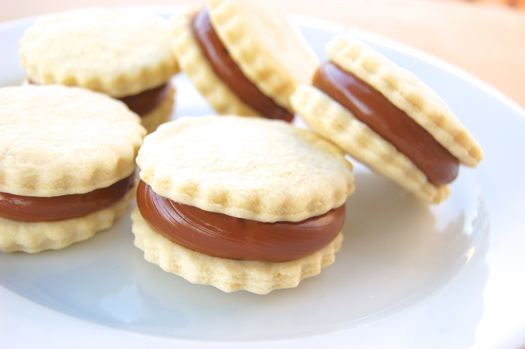
My first alfajor was a powdery-caramelly masterpiece with a layer of dulce de leche that I swear was an inch thick. That could just be how I remember it of course. But I was overwhelmed. Where had these been all my life? Happily it was’t long before a kind Peruvian lady clued me in to what they were and taught me how to pronounce them. Alfa-whuh?
Yor-ess.
Start by assembling your ingredients. Sift together your flours, salt and leavening. Note you can use up 1 1/2 cups of cornstarch or yuca flour out of a total 2 cups.
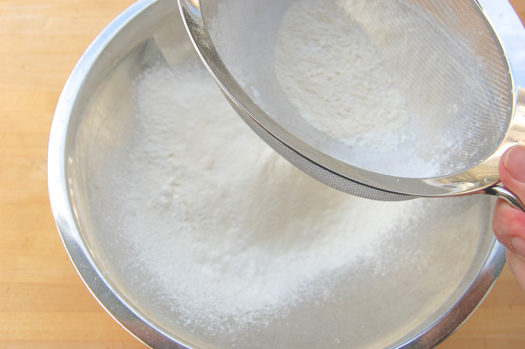
Cream the sugar and butter together.

Add egg yolk, egg, lemon zest and cogac.

Beat that together then add the flour and stir…
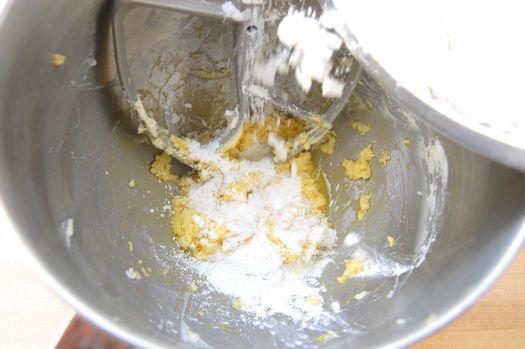
…until a dough starts to come together.

Remove the dough to a lightly floured board and push it together. Wrap that in plastic and refrigerate it for 30 minutes to firm it.
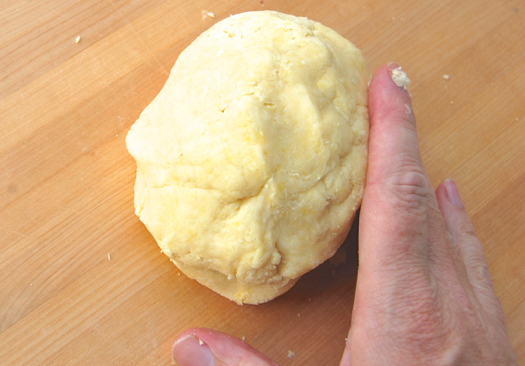
Divide the dough in half (it’s easier to work with only half at a time) and roll it into a rough ball.
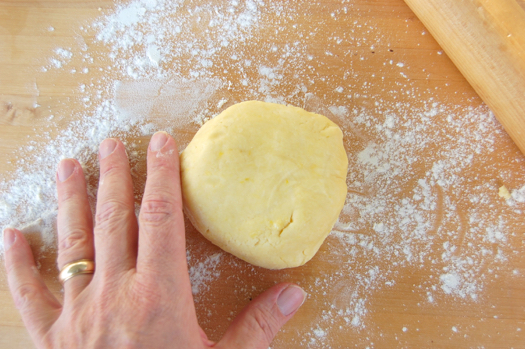
Roll the dough out to about 1/8 inch thick…thinner than you might think, but then there’s baking powder in the dough so you’ll get some expansion during baking.
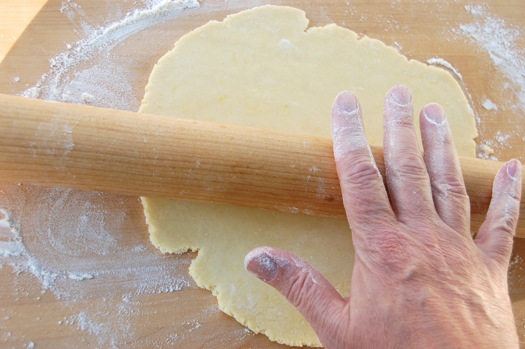
Cut out your shapes, you can make them just about any size, from small to large. Here I’m using a roughly 2-inch cutter.
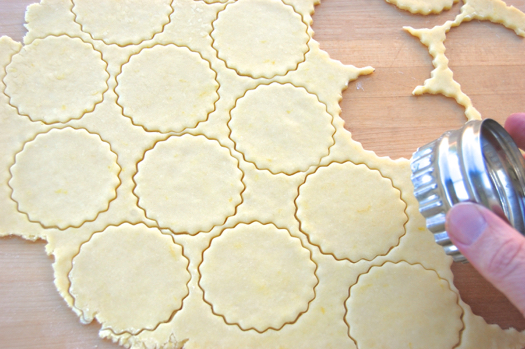
Lay them out on a sheet pan and let them rest for about 30 minutes to relax any gluten that may have developed during the rolling step. You don’t want them contracting into overly-thick little disks in the oven. Meanwhile, preheat your oven to 350 degrees Fahrenheit.
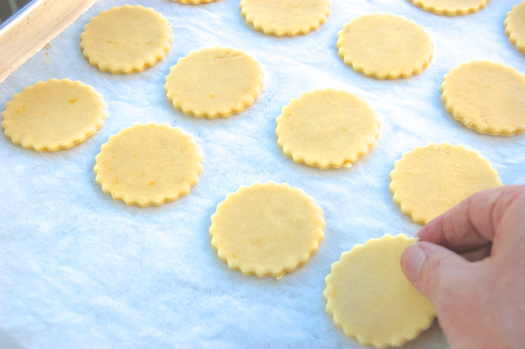
Bake them ten minutes until they’re heated through but not browned. The biscuit tops should be quite blonde in appearance. Some may be a little wobbly on the top…just use those for the bottoms! Allow these to cool completely before filling them since you don’t want any residual heat melting the dulce de leche.
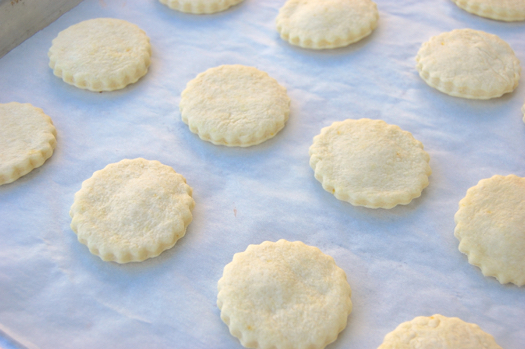
Speaking of which, the best way to apply it, I think, is with a pastry bag. I like a nice thick layer of filling so I’m using just the collar. You can use any tip you like. Here I should add that if you really want to blow your audience away make a home-made dulce de leche with 50% goat’s milk. To thicken it, add a slurry of 1 tablespoon cornstarch and 1 1/2 tablespoons water once it’s reduced down to about three cups. Whisk it in quickly, let it boil thirty seconds and take it off the heat. If it isn’t the consistency of peanut butter when it cools, you can always re-heat it and add more cornstarch. Anyway…
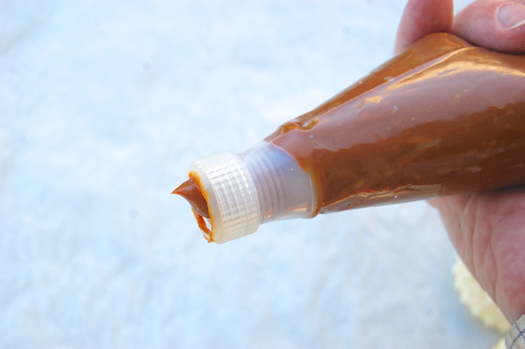
…I pipe on a swirl…
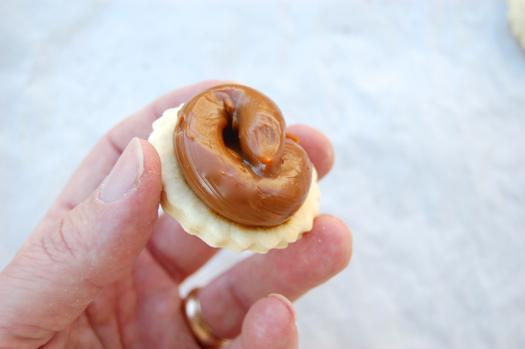
…put on the top and squeeze gently…
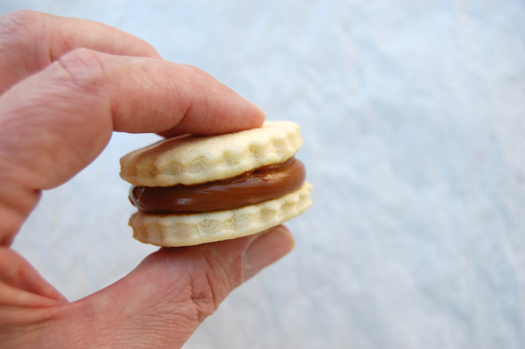
…and do my best to resist popping it into my mouth right then and there. Have fun!

Joe, those Alfajores look wonderful, though my experience with them (through my mother, who grew up in Lima, Peru) is that they tend to have a much thinner layer of dulce de leche between, almost like a Dutch stropwafel. Nevertheless, those look delicious and are giving me some major cravings!
Best,
Chris
Hey Chris!
One can’t help but be shaped by one’s first experience with an alfajor. Mine had a whole lot of filling, probably too much, but good grief it was fabulous. Thanks for the comment!
Cheers,
– joe
Your reminiscences about dulce de leche spurred my own, Joe. In high school in the 70s I took German, and the German, French and Spanish classes threw an international pot luck every year. One year the Spanish teacher brought a glorious fluff covered grainy cake filled with a 1 inch thick layer of dulce de leche, my first taste of the swoon-worthy delight. In the intervening years (37 years!) and too many moves I’ve lost the recipe she so kindly gave me. The fluff outside was, if I remember correctly, stabilized whipped cream covered with a browned meringue rather like some Baked Alaskas, and the cake layers were soft and more ground nuts than cake. It looked a slumpy mess of a cake, but was a little bite of heaven. Too much dulce? There can be no such thing!
Amen! Thanks, Jeannine!
– Joe
I want to say that this cake she’s referring to is a classic Dominican cake. They can be filled with dulce de leche, guava, pineapple or a mixture of each. Though the cake does not contain nuts, in my experience, sometimes the cake can be grainy and its topped with a meringue frosting.
Hey June!
Mrs. Pastry was in the Peace Corps in the Dominican Republic, though where she lived there wasn’t much baking going on. What’s the name of the cake by the way? I’m curious.
– Joe
Oooh, thank you! *runs off to Google up a recipe*
Wait! Don’t go! Click the link…the recipes are all right there! 😉
– Joe
Gorgeous – lots o’ dulce de leche but I’m cool with that. 🙂
Hehe…thanks, K!
– Joe
Gorgeous little gems!
Thank you, Vicki! They went over big with the girls…with that much caramel how could they not?
Cheers,
– Joe
Tempting!
I’m sure it’s not traditional but I think they’d be awfully pretty with a Linzer-style cutout on their tops.
Nice idea, Rainey!
– Joe
Hi Joe, those look really good!!!! Jus t asilly question; did you dust the board with flour or cornstarch?
Hi Melody!
That’s a good question, actually. I used regular AP flour. Cake flour and corn starch have such a tiny particle sizes that they can end up doing more harm than good if the surface isn’t perfectly dry. It’s my go-to.
Cheers,
– Joe
Thank you.
The dulce de leche + goat milk combination reminds me of the cheese Brunost 😀
That brown cheese is good stuff, L! I never made the connection, but it’s apt!
Cheers,
– Joe
Wow these look delicious. My dulce de leche loving fiance would love these.
I think I would cheat and make some dulce de leche by boiling a can of condensed milk, but it would be fun to make these adorable cookies from scratch.
Hey Kate!
By all means, make your dulce de leche your way…though you may still have to thicken it once you’re done. If it’s too thin to use as a spread, put it in a pan and bring it to a simmer, then add a slurry of 2 teaspoons of cornstarch and 1 teaspoon of water. Simmer for another 30 seconds, let it cool and you should be good to go!
Cheers and have fun!
– Joe
These turned out really delicious, though my husband complained that there should have been more dulce de leche (I didn’t want to mess with piping and used knife to apply filling which resulted in quite thin layer – next time I’ll give filling duties to him!) I used Cointreau instead of cognac so orange and lemon flavor was quite distinct and played nicely with dulce de leche.
Cointreau was a great improvisation, Antuanete! Well done.
Actually a thin layer of dulce de leche is more traditional, but I’m with your husband: who needs tradition in this case?
Thanks for the report!
– Joe